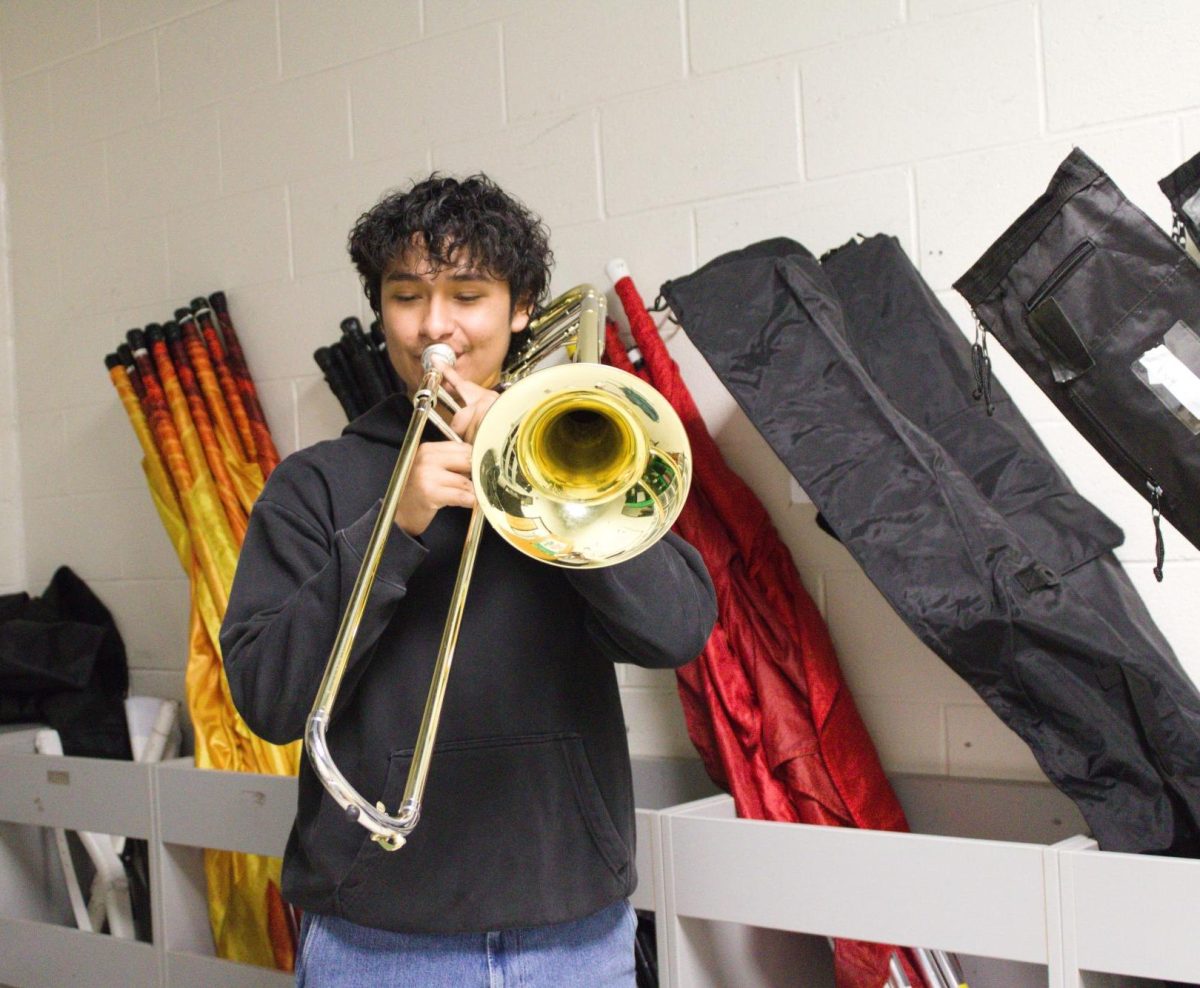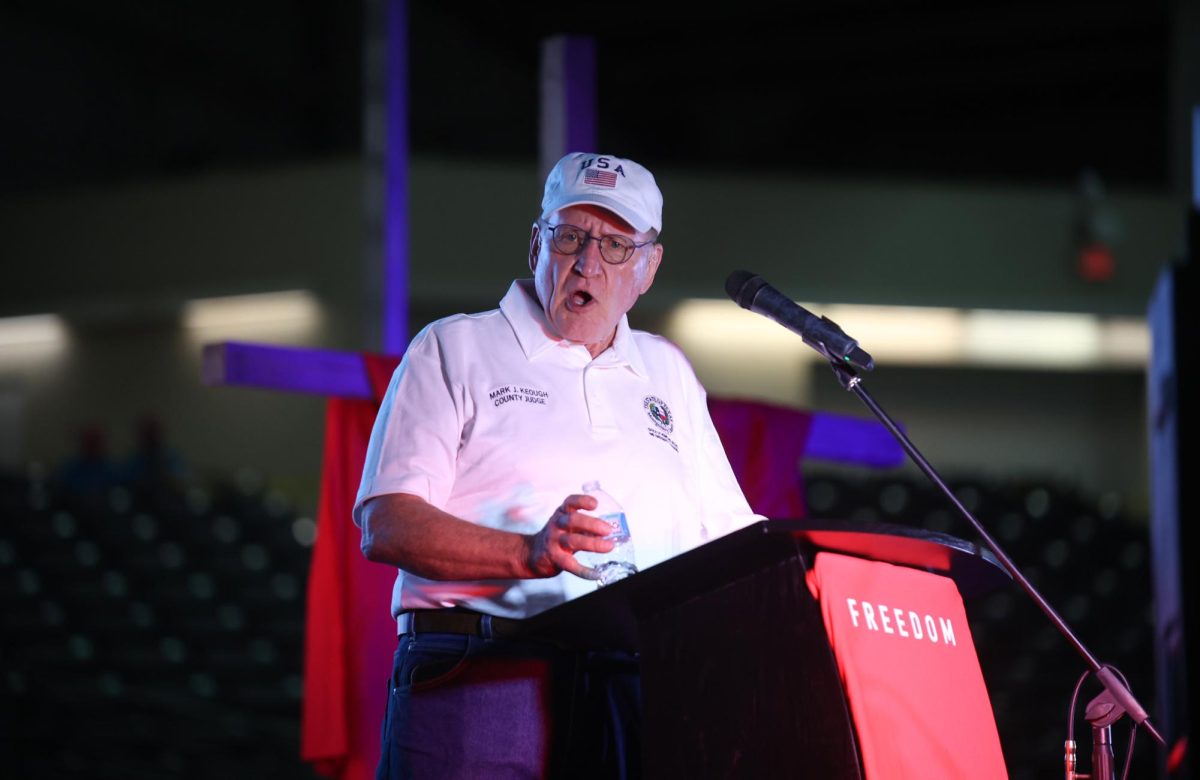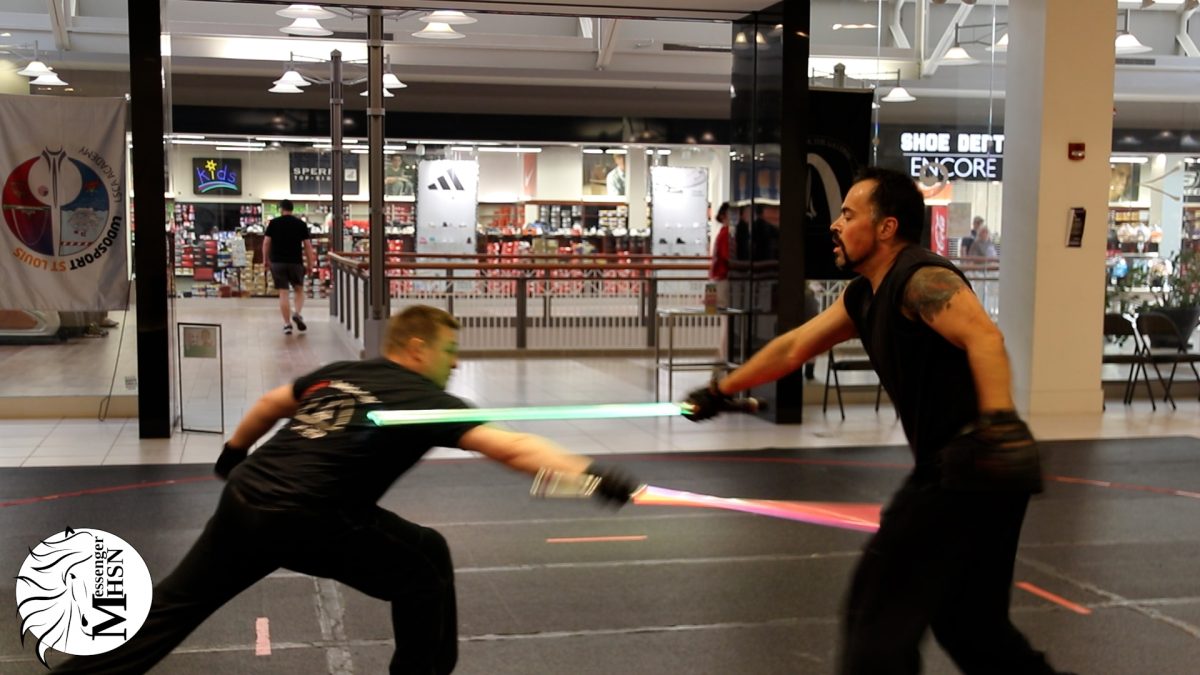A fluffy brown chick stands alone on a sandy beach. The calm British voice of natural historian David Attenborough reverberates out of the laptop’s speakers, and the students clustered around it draw closer: “This chick, six weeks old, will become a supreme long-distance traveler.” This is not a science class. This is a group of friends enjoying a nature documentary during a free period in the lounge while high on weed.
Albert*, one of the nature documentary watchers, said he and his friends get high at school regularly.
“Imagine this,” Albert said. “We go to In-N-Out for lunch and then [in the] car ride over [and] inside the In-N-Out, [we are] just tapping the f**k out of a pen. Then [we] get back to school, open up Our Planet II, [and] give it a nice little watch. I’m just sitting there, really taking in nature.”
Because Albert’s free period is after lunch, he only has one more class left in the day. Albert said the effects of the marijuana mostly wear off before class starts.
“When I have class, I don’t get that high,” Albert said. “If I’m going to class, I’m always basically sober.”
Cannabis, also known colloquially as marijuana or weed, in addition to alcohol and nicotine, is the most prevalent drug among secondary school students and has been for nearly half a century, according to the Monitoring the Future Study, which tracks drug use among adolescents. Although the percentage of students who say marijuana is easily accessible has fallen significantly since 2020, the survey shows that 70% feel marijuana is obtainable.
Alana* said she smokes weed about two times a month. Alana said she uses cannabis because it casts the things she sees around her in a new light.
“You feel things on a deeper and more beautiful level,” Alana said. “I’ll be with friends, I’ll be high and [I’m] like, ‘I love you so much.’ It heightens everything and makes it so beautiful. It makes you really appreciate life. Obviously there [are] ways to appreciate life beyond being high.”
California was the fifth state to legalize recreational marijuana. Los Angeles (LA) has 238 approved cannabis dispensaries, according to the LA Department of Cannabis Regulation. Keri*, another student, said she thinks this atmosphere of marijuana use contributes to its popularity among students.
“The weed market is very concentrated in LA,” Keri said. “There’s a lot of different options and ways to go about getting weed. I also think it’s definitely a drug that isn’t as harmful as other drugs. It [is] easy to get, makes for a fun time and is more socially acceptable. It’s not every day that you see people snorting coke at parties, but I do see a couple people smoking joints. I think it’s [been] more popularized in the last few years especially because legalization made it a drug that was more attainable.”
Alana said the first time she used marijuana was with her older cousin.
“I took like two hits of her stiizzy and then coughed,” Alana said. “I took bad hits because I didn’t know how to smoke, and I coughed a bunch. My throat really hurt, and I was convinced that I was overdosing on fentanyl and had a panic attack. Then, [my cousin] put on baby sensory videos, and I was fine.”
Fentanyl, a highly potent opioid, and other synthetic opioids are now the main driver of overdose-related deaths, according to the National Institute on Drug Abuse. Larissa Mooney, an addiction psychiatrist on the faculty of the University of California, Los Angeles (UCLA) said the opioid crisis and increased societal focus on fentanyl have resulted in shifts in trends around drug usage.
“We do know that when individuals perceive more risk or harm from use of a certain substance, they are more likely to avoid it,” Mooney said. “[That] doesn’t mean that rate goes down to zero, but there is much more media attention and public health awareness now around the dangers of opioids, fentanyl and even just using a pill that might have been prescribed for a medical cause. [There is more awareness] that there could be risk and that [that] pill may not contain what you think is in that pill.”
A commonly abused pill is Concerta, a prescription stimulant commonly used to treat attention deficit hyperactivity disorder (ADHD) and narcolepsy. For brand-name Concerta, one 36 mg tablet costs about $16.50 without insurance, according to GoodRX.com.
Before Thanksgiving break, Elaine*, a student who takes prescribed Concerta for her ADHD, said a friend offered her $100 for a single pill. Although Concerta and Adderall, another common ADHD prescription medication, are different drugs, Elaine said most people refer to the medication she takes as Adderall because they do not know the difference between the two stimulants. Prescription stimulants for ADHD are commonly abused for their effects, according to American Addiction Centers.
Elaine said although she is approached about selling her medication multiple times a week, usually by the same people, she would never sell a pill.
“I would never in a million years sell [my prescription],” she said. “I don’t want to be responsible for [someone] being hurt in any sort of way. Also, I don’t think it is morally correct to give someone drugs.”
Elaine said she thinks other students want to buy Concerta from her because of the rigorous school atmosphere and their perceptions of the stimulant’s potential positive impacts on their ability to focus.
“Think about the environment that we’re in,” Elaine said. “We’re expected to have great grades and keep up. I definitely don’t think I’d be able to work without [Concerta] just because I can’t concentrate. If kids had access to that, especially when they [don’t] need it, they would be addicted.”
Despite her personal experiences with Concerta, Elaine said she thinks weed is a far more common drug for students to use.
“Weed is something that is more accessible for kids,” Elaine said. “I don’t think they’re trying to get it through a friend because they’re going to a dispensary. I feel like [marijuana] is easier to get because it is not their own prescription. I think drugs like Adderall and anything you have to get over the counter are harder to access without being laced.”
Keri said she thinks concerns about fentanyl and laced drugs have resulted in more students purchasing their marijuana at dispensaries, rather than from suspicious sellers who could lace it.
“A lot of people have fake IDs and just go to dispensaries and, at the majority of them, the fake ID will scan and let you in,” Keri said. “Less people are getting [drugs] from drug dealers. I don’t really see that being a thing. Because also with [the dangers of] fentanyl, people are just wanting to be as safe as possible, even if that means getting a fake ID and risking getting in trouble for that.”
Although marijuana use among secondary school students increased in 2022, it remained far below pre-pandemic levels. For amphetamines, like Adderall and Ritalin, and other prescription drugs, prevalence of student abuse has been declining since 2005. However, use of hallucinogens among 12th grade students is now the same as it was before COVID, according to the Monitoring the Future survey.
Felix*, a student who has smoked weed since seventh grade and used the hallucinogens psilocybin and salvia, said he noticed a stark difference in himself after trying magic mushrooms for the first time.
“It was kind of eye opening,” Felix said. “I know when we talk about drugs like that a lot of people just assume it’s bulls**t, but I went through a really dark period of my life, and I took mushrooms, and I kind of [went] down a better path.”
Felix has now taken psilocybin nine or 10 times but has only taken salvia, a more intense psychedelic than magic mushrooms, one time. While high on salvia, Felix said he felt like he had been transported to another world.
“I watch Midnight Gospel, a podcast show where they animate the podcast [with] silly cartoons, and they were talking about salvia,” Felix said. “I was like, ‘That sounds gnarly. I want to try it.’ I found out that it’s legal in California. Within 20 minutes, [I] drove down to a smoke shop and bought some and did it, and it was insane.”
Felix said that while he would like to do salvia again, he has not yet because he is aware of the potentially damaging effects of intense psychedelics. He said he used his fake ID to purchase the salvia, and he obtained the magic mushrooms from a dealer.
“My plug is a friend of mine, and gets all their stuff [or] grows their own stuff,” Felix said. “I trust that person, so I wouldn’t ever be worried about [lacing], but obviously if I go to a different plug, I’ll be skeptical. I always ask around and make sure that multiple people have bought from one plug [and have] gotten good [stuff] from them. [I am] just doing my research.”
Felix said he is unable to describe the experience he had while under the influence of the psychedelics.
“To my friends, I was passed out on in my chair, but in my head, I was literally living another life,” Felix said.
*Name has been changed.
This story was originally published on The Harvard-Westlake Chronicle on December 13, 2023.




































